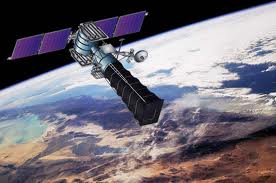Russians Lose One of Only Three Satellites for Monitoring Nuclear Missile Launches
I have posted many essays on nuclear weapons on my nuclear blog at nucleotidings.com. Most people are not aware or are not bothered by the fact that the United States and Russia both have about fifteen hundred nuclear missiles aimed at each other that can launch in minutes. As I have posted before, the U.S. missile forces has low morale all the way up to the generals in charge. Russia has been carrying on with the nuclear weapons left over from the Soviet Union and the Cold War but there are reports of degradation in their infrastructure and the preparedness of missile forces.
Twenty years ago in 1995, Norway launched a rocket to study the Northern Lights. A Russian radar station five hundred miles away detected the launch on radar. Their analysis of the trajectory suggested that the missile could have been launched by a U.S. Trident submarine to blind Russian radar as a prelude to a nuclear first strike by the U.S. The Russian military was put on high alert and the President activated his nuclear launch system. The Russians realized that the launch was a perfectly innocent sounding rocket and they did not launch their missiles. At that time, Russia still had the old Soviet system in place for monitoring U.S. continental missile launch sites.
The Soviet monitoring system consisted of two types of satellites. One type of satellite was launched into a highly elliptical orbit. The angle of observation for the satellite makes it easy to see missile launch plumes against the backdrop of space. It was thought that this type of satellite would be able to easily distinguish missile launches from natural phenomena. However, in 1983, one of these satellites mistook sunlight reflecting off a high layer of clouds for a missile. Currently, there are two of this type of satellites in service, the Cosmos-2422 and the Cosmos-2446.
In order to deal with the false alarms from the first type of satellite, a second type of satellite was launched. This type of satellite flies in an geostationary orbit. It orbits at the same rate of the Earth's rotation and so remains stationary over a particular spot on the Earth. In the case of this type of Russian satellite, it is positioned directly over the continental U.S. The Russian Cosmos-2479 satellite was the only geosynchronous monitoring satellite they had. These two types of satellites in combination are much more reliable that either type alone. It was recently announced by Russia that the Cosmos-2497 has stopped functioning. With their only geostationary satellite gone, the Russians are back to relying on the two highly elliptical orbit satellites which have already been shown to be prone to mistakes.
I appreciate all the work that has been done on nuclear disarmament, especially between the U.S. and Russia but there is a great deal more that needs to be done. As I have pointed out in other posts, only ten percent of the U.S. or the Russian nuclear arsenal might be enough to cause a nuclear winter that would end human civilization. It is critical to the future of the human race that the threat of nuclear war be eliminated as soon as possible.
Cosmos-2479 geostationary satellite:
